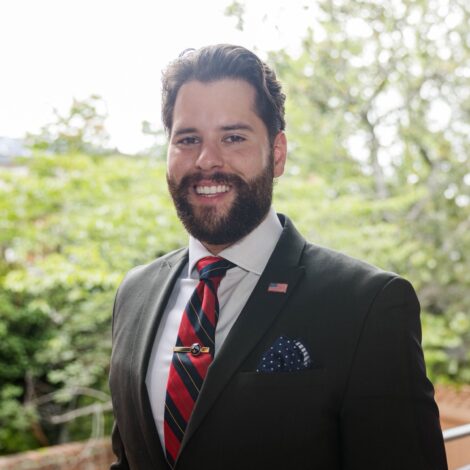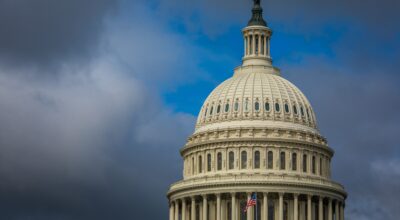
Primer: The Unconstitutionality of For-Cause Removal Protections for Statistical Agency Heads
On August 2, 2025, President Donald Trump removed Bureau of Labor Statistics (BLS) Commissioner Erika McEntarfer following the release of a revised jobs report that significantly downgraded earlier employment figures. In response, congressional Democrats introduced the Statistical Agency Integrity and Independence Act (H.R. 4907), which would impose fixed terms and for-cause removal protections on the heads of the federal statistical agencies: the Bureau of Labor Statistics, the Census Bureau, the National Center for Education Statistics, and the Bureau of Justice Statistics. The bill would limit removals of these agency heads to cases of “inefficiency, neglect of duty, or malfeasance,” explicitly barring termination based on a president’s disagreement with the content or timing of official data.
While framed as a safeguard for statistical impartiality, H.R. 4907 is unconstitutional. Article II vests the executive power in the president, including the authority—and duty—to remove principal officers who execute federal law. Supreme Court precedent in Myers, Free Enterprise Fund, Seila Law, and Trump v. Wilcox makes clear that Congress may not insulate such officers from presidential oversight through for-cause removal protections. The heads of the Bureau of Labor Statistics, Census Bureau, National Center for Education Statistics, and Bureau of Justice Statistics exercise executive power and are not part of a multimember commission or adjudicative body; under the unitary executive principle, the president must be able to remove them at will. The bill’s supporters contend that insulating these officials is necessary to protect data integrity and public trust, likening them to independent agencies and asserting that for-cause removal still preserves accountability. But reliable statistics can be safeguarded without violating Article II. Humphrey’s Executor does not apply because these are single-headed executive offices exercising core executive functions, and Seila Law, Collins, and Trump v. Wilcox reject extending for-cause limits to such posts. For-cause standards are vague, litigable, and constitutionally inadequate substitutes for presidential judgment, and even a nominal encroachment on removal power invites greater ones. The Constitution draws a categorical line: Principal officers who execute the laws must remain removable at will by the president, and policy preferences for “independence” cannot override that separation-of-powers command.
Article II and the President’s Removal Power
Executive Power and Political Accountability
Article II of the Constitution provides that “[t]he executive Power shall be vested in a President of the United States,” who must “take Care that the Laws be faithfully executed.”1 This design makes the president accountable for the entire executive branch—an accountability that cannot function if he lacks control over his subordinates. The Supreme Court recognized in Myers v. United States that the president’s removal authority is a core aspect of executive power, inherent in the constitutional grant of “the executive Power.”2 As Chief Justice William Howard Taft explained, if the president could not remove those who act on his behalf, he could not ensure the faithful execution of the laws.3 Without a removal power, the president’s ability to deliver on the voters’ mandate would be crippled, and “[a] feeble Executive implies a feeble execution of the government,” yielding “a bad government.”4 Our Constitution’s Framers, therefore, insisted on “energy in the Executive” via unity and responsibility, rejecting proposals for a multimember executive or executive councils that would sap accountability.5 Alexander Hamilton famously warned that diffusing executive authority “would serve to destroy, or would greatly diminish, the intended and necessary responsibility of the Chief Magistrate.”6 In short, the president must have the power to remove executive officials at will in order to be answerable for the executive branch’s performance.7
Recent jurisprudence has emphatically reaffirmed this principle. In Free Enterprise Fund v. Public Company Accounting Oversight Board (2010), the Court struck down tenure protections that insulated inferior officers from at-will removal, explaining that the president must have “the authority to remove those who assist him in carrying out his duties” in order to control policy and be held to account.8 More recently, in Seila Law v. Consumer Financial Protection Bureau, the Court declared that Congress cannot curb the president’s removal power over a single-headed executive agency because such an arrangement would violate the separation of powers.9 The Constitution requires that officials wielding executive authority remain accountable to the elected president—a point underscored by the Court’s observation that policy advantages like agency independence “cannot override” the Constitution’s mandate of political accountability.10 As the Court affirmed in Seila Law, no abstract benefit of expertise or impartiality would justify subverting the president’s control over the executive branch.11
Narrow Exceptions: Humphrey’s Executor and Morrison
The Supreme Court has carved out two limited exceptions to the president’s at-will removal power—exceptions that the bill’s supporters would likely invoke but that do not save the proposed protections. First, in Humphrey’s Executor v. United States, the Court upheld for-cause tenure for members of the Federal Trade Commission (FTC), reasoning that the FTC exercised quasi-legislative or quasi-judicial powers rather than core executive functions.12 Humphrey’s Executor approved multimember, bipartisan commissions performing expert adjudicatory and rulemaking duties, insulated to a degree from politics. Second, in Morrison v. Olson, the Court allowed Congress to give a single independent counsel limited tenure protections, on the theory that this prosecutor was an inferior officer with a narrow, defined jurisdiction and not a policymaking principal officer.13 These two decisions are outliers in an otherwise consistent line of cases defending the unitary executive.14 The modern Court has read them narrowly: Humphrey’s Executor is treated as applicable only to multimember expert agencies without substantial executive power and Morrison is treated as confined to inferior officers in temporary, limited roles.15 Neither exception fits the heads of the BLS, Census Bureau, or other statistical agencies.
Importantly, the agencies targeted by H.R. 4907 do not fall within Humphrey’s Executor’s narrow scope. The BLS and Census Bureau are not multimember commissions in the FTC’s mold; they are led by single administrators. Nor do these officials perform adjudications or make binding regulations akin to quasi-judicial or quasi-legislative acts. Their core function is executing federal law by collecting and publishing statistical data (employment figures and census counts), which is an executive task assigned by Congress to the executive branch. These agency heads thus wield executive power in carrying out statutory mandates, and Humphrey’s Executor does not extend to principal officers exercising executive power in their own right. Likewise, the statistical agency chiefs are not inferior officers with a limited scope as in Morrison; on the contrary, they are high-level officials (appointed by the president with the Senate’s consent) entrusted with significant, ongoing responsibilities nationwide. In constitutional terms, they are principal officers. Congress cannot evade Article II’s command simply by labeling a role “technical” or “impartial.”16 However scientific the agency’s work may be, it remains an exercise of executive authority on the public’s behalf, and the official in charge must answer to the president.
Seila Law and Collins: Reaffirming Unitary Executive Principles
The Supreme Court’s recent decisions remove any doubt that Congress may not impose tenure limits on single-agency heads like those in question. In Seila Law, the Court struck down the for-cause removal protection of the Consumer Financial Protection Bureau (CFPB)’s lone director, declaring it an unconstitutional infringement on presidential power.17 Chief Justice John Roberts’s opinion held that such an arrangement lacked historical precedent and fell outside any established exception, and added that the CFPB’s leadership by a single, independent director violated the separation of powers.18 The Court emphasized that the Constitution generally requires principal officers who wield significant executive authority to be removable by the president at will.19 The following year, the Court applied the same logic to the Federal Housing Finance Agency (FHFA). In Collins v. Yellen, the Court ruled that the FHFA director’s removal restriction was unconstitutional, squarely in light of Seila Law’s holding.20 The FHFA—like the CFPB—had a single-director structure with a for-cause limit; the Court invalidated that limit and affirmed the president’s unrestricted removal authority over the agency.21
These decisions are directly on point. The BLS commissioner and Census Bureau director likewise are singular executives atop their agencies. Under Seila Law and Collins, any statute purporting to shield such an official from at-will removal by the president is constitutionally suspect. Indeed, the Collins Court noted that the FHFA’s structure was analogous to the CFPB’s, and thus the same separation-of-powers flaw applied.22 So too here: A law insulating statistical agency heads would mirror the invalid CFPB and FHFA schemes, with one important difference—BLS and the others historically operate within cabinet departments (Labor and Commerce, respectively), making them even less plausibly “independent” entities. The BLS commissioner, for example, is a Senate-confirmed presidential appointee in the Department of Labor, traditionally serving a four-year term but “unless sooner removed.”23 H.R. 4907 would overturn this longstanding arrangement and forbid the president from removing the BLS head except for cause.24 Such a restriction impermissibly would impede the president’s “ability to supervise the agency heads who exercise power on his behalf.”25
Historical Practice of Statutory Removal Protection Failures
History reinforces the constitutional rule. Congress occasionally has experimented with giving fixed terms and removal limits to certain agency heads, but whenever tested, the president’s power has ultimately prevailed. Notably, Congress in 2012 gave the director of the Census Bureau a fixed five-year term to straddle administrations, aiming to insulate the planning of the decennial census from presidential politics.26 But in practice, this provision has not stopped turnover right before or after changes in administrations: Three directors have resigned three times under political pressure.27 The attempt at statutory tenure “is clearly not working” to depoliticize the role, as one historian put it,28 and it underscores that the executive’s authority finds ways to reassert itself. More dramatically, in 2021, President Joe Biden fired Social Security Administration (SSA) Commissioner Andrew Saul, a Trump appointee who by statute had a fixed term and could only be removed for neglect or malfeasance.29 Biden’s White House and the Department of Justice expressly relied on the Supreme Court’s recent rulings in Seila Law and Collins to justify overriding that tenure protection.30 The Office of Legal Counsel concluded that Congress’s limit on removing the SSA commissioner is unconstitutional, and Biden removed Saul without waiting for his term to expire.31 In other words, even a president of the opposing party to Trump’s took the position that for-cause removal restrictions on an agency head could not stand after Seila and Collins.32 Congress’s effort to shield the SSA head was swept aside in favor of Article II’s command, and the same fate would await the proposed protections for BLS and Census Bureau heads.
H.R. 4907’s Removal Restrictions Violate the Separation of Powers
Impairment of the President’s “Take Care” Duty
The crux of why these for-cause removal limits are unconstitutional is that they strip the president of the ability to “take Care that the Laws be faithfully executed” in these agencies.33 The gathering and reporting of economic and demographic data is not an optional or purely advisory task—it is an official function mandated by law (for example, the census is required by Article I, § 2 of the Constitution and federal statutes, and labor statistics are required for congressional reports and policy decisions). Ensuring the integrity and efficiency of those functions is part of faithful execution of the law. If a president believes an agency head is performing poorly, mismanaging the office, or distorting data, he must be able to remove that person. The Supreme Court in Seila Law stressed that without removal power the president cannot be held fully accountable for agency actions. Here, shielding the BLS or Census Bureau chief from removal except for narrowly defined “cause” directly interferes with the president’s constitutional duty to supervise the executive branch. It would vest an extraordinary degree of independence in an unelected official, who could defy the president’s policy priorities or lose his confidence yet remain in office. This is exactly the scenario the unitary executive doctrine forbids: an official exercising significant executive power but not being accountable to elected authority. As one federal court observed in an analogous context, the “Government is likely to show that [officials in such positions] exercise considerable executive power,” meaning they cannot be shielded from at-will removal consistent with Article II.
Concrete examples illustrate the stakes. Suppose a BLS commissioner is found to have falsified data or grossly mismanaged the agency’s statistical methods—clear “cause” for removal. Of course the president could fire him or her under the bill (and indeed under current law). But now suppose the situation is less black and white: The president loses trust in the commissioner’s judgment, suspects bias, or simply wants a new direction in how economic data are analyzed (for instance, emphasizing certain metrics over others). Those reasons might not meet a strict “neglect or malfeasance” standard. Yet the president’s disagreement could be rooted in legitimate policy differences or concern for accuracy. Under H.R. 4907, the president’s hands would be tied unless he could prove “inefficiency, neglect of duty, or malfeasance”—a high bar that might force a president to tolerate an agency head whom he believes is undermining effective execution of the law. The Framers did not intend for the president to have co-governorship in his own branch. On the contrary, unity and “[d]ecision, activity, secrecy, and despatch” in the executive require that subordinates ultimately answer to the president.34 H.R. 4907’s removal conditions would erode that unity.
Heads of Statistical Agencies’ Exercise of Executive Power
Although BLS and Census Bureau officials do not bring enforcement actions or set interest rates, they undeniably exercise executive powers in a constitutional sense. The BLS commissioner oversees production of the official jobs report that can sway markets and inform federal policy; the Census Bureau director administers the nationwide census and surveys critical to representation and funding. These tasks involve significant discretion in administration, methodology, and timing, and all carry profound consequences for governance. The Supreme Court has made clear that “executive power” extends beyond traditional law enforcement to include any authority to carry out federal law, such as rulemaking, administrative oversight, data collection, and even adjudication within the executive branch. In Seila Law, Roberts explained that the hallmark of executive power is the ability to make decisions that bind the rights of others or direct government policy.35 Setting the nation’s official labor statistics or population counts fits that description: These figures guide legislation, budgetary allocations, and economic planning. Moreover, the heads of these agencies often have to make judgment calls about data quality, revisions, and releases. Such decisions are part of executing the law that mandates these reports. Under Seila Law’s reasoning, an officer with any substantial executive authority—even if primarily “informational”—must remain accountable to the president. Indeed, the Court’s recent emergency stay in Trump v. Wilcox (2025) indicated that even bodies with adjudicative functions (the Merit Systems Protection Board and National Labor Relations Board) likely “exercise considerable executive power,” making their for-cause removal limits unconstitutional.36
The Bill’s Effect: An Unchecked Fourth Branch Official
If H.R. 4907 were enacted and somehow upheld, it would create an odd constitutional quandary: an executive official whom the president (and by extension a cabinet secretary) cannot remove despite dissatisfaction with his or her performance. That official would wield a fixed term of years, during which time—short of misconduct provable as “cause”—he or she could effectively defy the president’s directives on data policy or even refuse to leave upon request. This would undermine the chain of command in the executive branch. It would also introduce uncertainty: What if a president fires a BLS commissioner for what he deems “inefficiency” (a statutory cause), but the official claims in court that his or her removal was actually about conflicting with the president’s economic agenda? The judiciary could be dragged into second-guessing the president’s motives for removal, an intrusion into executive functions that Seila Law and others pointedly sought to avoid. The Supreme Court prefers clear lines: Either an office is subject to political removal or it’s not, but micromanaging the reasons for firing is a recipe for constitutional conflict. H.R. 4907 invites exactly such conflicts by statutorily limiting acceptable reasons to fire an official. This is another respect in which the bill offends separation of powers: It could put courts in the position of policing the president’s personnel decisions rather than leaving such decisions to the political process, as the Framers intended. There is no law or clause in the Constitution that calls for an official to “stand above and outside the President’s unitary authority over the Executive Branch.”37
The Political Reality of Statistical Manipulation
Beyond the bill’s constitutional defects, the recent history of federal statistical agencies underscores why the president must retain direct removal authority: These offices are not immune to partisan influence. The Bureau of Labor Statistics has, on multiple occasions, issued significant post-publication revisions to jobs data—sometimes revising away hundreds of thousands of previously reported gains.38 Such large adjustments can have real political impact, shaping public perception of an administration’s economic performance. These revisions may reflect methodological flaws, but they also invite suspicion that the data were initially presented to favor one political narrative over another. Likewise, the Census Bureau has faced allegations of partisan gaming, from disputes over the 2020 apportionment counts to controversies over citizenship data.39 In both cases, statistical “independence” has not insulated the agencies from political controversy; rather, it has made it harder for elected leaders to respond when credibility is in doubt. When the public’s trust in official data is shaken, accountability cannot be deferred to fixed terms and narrow cause provisions. The constitutional check is presidential oversight, including the ability to remove leaders whose stewardship undermines the integrity or perception of the data itself.
Conclusion
The House of Representatives may earnestly wish to prevent a recurrence of Trump’s rightful firing of the BLS chief. But the solution cannot be a law that trammels the president’s removal power and thereby undermines the separation of powers. Under Article II and binding precedent, the president must retain the authority to remove the heads of executive agencies at will, and Congress cannot limit his power to remove such officials. If H.R. 4907 were enacted, it would almost certainly face immediate legal challenge—and, given the Supreme Court’s clear rulings in Seila Law and Collins, the courts would likely strike it down. Even aside from those precedents, the proposal runs contrary to the first principles of our constitutional structure dating back to the Decision of 1789 and Myers: that executive officials remain under the president’s control. Creating new independent fiefdoms for statistical agencies would set its own dangerous precedent, one in which unelected bureaucrats could defy elected authority with impunity. That outcome would be worse for our democracy than any momentary political interference in data.
To be sure, the impartiality of federal statistics is a compelling value, but it must be protected by measures consistent with the Constitution. Transparency, oversight, and professional norms can deter data manipulation without compromising presidential oversight. Meanwhile, the Constitution’s mandate of a unitary executive is uncompromising. As the Supreme Court has recently reminded us in a series of cases, the President has the power to remove such officers at will under the separation of powers, and neither historical arrangements nor policy arguments can supersede the core Article II principle that executive power is vested in the President alone. Insulating the BLS from political meddling cannot come at the cost of insulating an agency from all political accountability. Our system entrusts the president—and by extension, the voters—to ultimately ensure integrity in government. However well-intentioned it may be, H.R. 4907 transgresses the Constitution by attempting to place these agencies beyond the president’s control. For these reasons, the bill is unconstitutional, and Congress cannot validly enact it into law.
Endnotes
1. U.S. Const. art. II, § 1, § 3.
2. 272 U.S. 52 (1926) (affirming the president’s inherent removal power as part of executive power).
3. Id. at 133.
4. The Federalist No. 70 (Alexander Hamilton), https://guides.loc.gov/federalist-papers/text-61-70#s-lg-box-wrapper-25493457.
5. Id.
6. Id.
7. See Benjamin Osborne, Primer: The President’s Power to Remove the Federal Reserve Chairman, Ctr. for Renewing Am. (July 16, 2025), https://americarenewing.com/issues/primer-the-presidents-power-to-remove-the-federal-reserve-chairman/.
8. 561 U.S. 477, 513–14 (2010).
9. 591 U.S. 197 (2020).
10. Id.
11. Id.
12. 295 U.S. 602 (1935).
13. 487 U.S. 654 (1988).
14. Ellena Erskine, Will the court overturn a 1930s precedent to expand presidential power, again?, SCOTUS Blog (Apr. 10, 2025), https://www.scotusblog.com/2025/04/will-the-court-overturn-a-1930s-precedent-to-expand-presidential-power-again/.
15. Id.
16. Statistical Agency Integrity Act (H.R. 4907) (2025).
17. 591 U.S. 197 (2020).
18. Id.
19. Id.
20. 594 U.S. ___ (2021).
21. Id.
22. Id.
23. 29 U.S. Code § 3.
24. Statistical Agency Integrity Act (H.R. 4907) (2025).
25. Amy Howe, Supreme Court allows Trump to remove agency heads without cause for now, SCOTUS Blog (May 22, 2025), https://www.scotusblog.com/2025/05/supreme-court-allows-trump-to-remove-agency-heads-without-cause-for-now/.
26. 13 U.S.C. § 21(b)(1).
27. Mike Schneider, Robert Santos decides to resign as US Census Bureau director midway through a 5-year term, AP News (Jan. 31, 2025), https://apnews.com/article/census-bureau-robert-santos-redistricting-bac775b7251f4bfabb9026f0930a553d.
28. Id.
29. See 42 U.S.C. § 902(a)(3); Myah Ward, Biden fires Social Security commissioner, a Trump holdover, Politico (July 9, 2021), https://www.politico.com/news/2021/07/09/biden-fires-social-security-commissioner-499009.
30. Constitutionality of the Commissioner of Social Security’s Tenure Protection, 45 Op. O.L.C. __ (July 8, 2021), https://www.justice.gov/olc/file/1410736/dl#:~:text=The%20President%20may%20remove%20the,See%20Letter%20for%20Lloyd%20N.
31. Id.
32. Id.
33. See U.S. Const. art. II, § 3.
34. The Federalist No. 70 (Alexander Hamilton), https://guides.loc.gov/federalist-papers/text-61-70#s-lg-box-wrapper-25493457.
35. 591 U.S. 197 (2020).
36. 605 U.S. ___ (2025) (stay order).
37. Jeff Clark, The U.S. Justice Department Is Not Independent, Ctr. for Renewing Am. (May 17, 2023), https://americarenewing.com/issues/the-u-s-justice-department-is-not-independent/.
38. Bureau of Labor Statitics, Employment Situation Summary, (Aug. 1, 2025), https://www.bls.gov/news.release/empsit.nr0.htm.
39. Wade Miller and Andrew White, Policy Brief: The Census Bureau Is Defrauding American Voters, Ctr. for Renewing Am. (Aug. 7, 2025), https://americarenewing.com/issues/policy-brief-the-census-bureau-is-defrauding-american-voters/.





